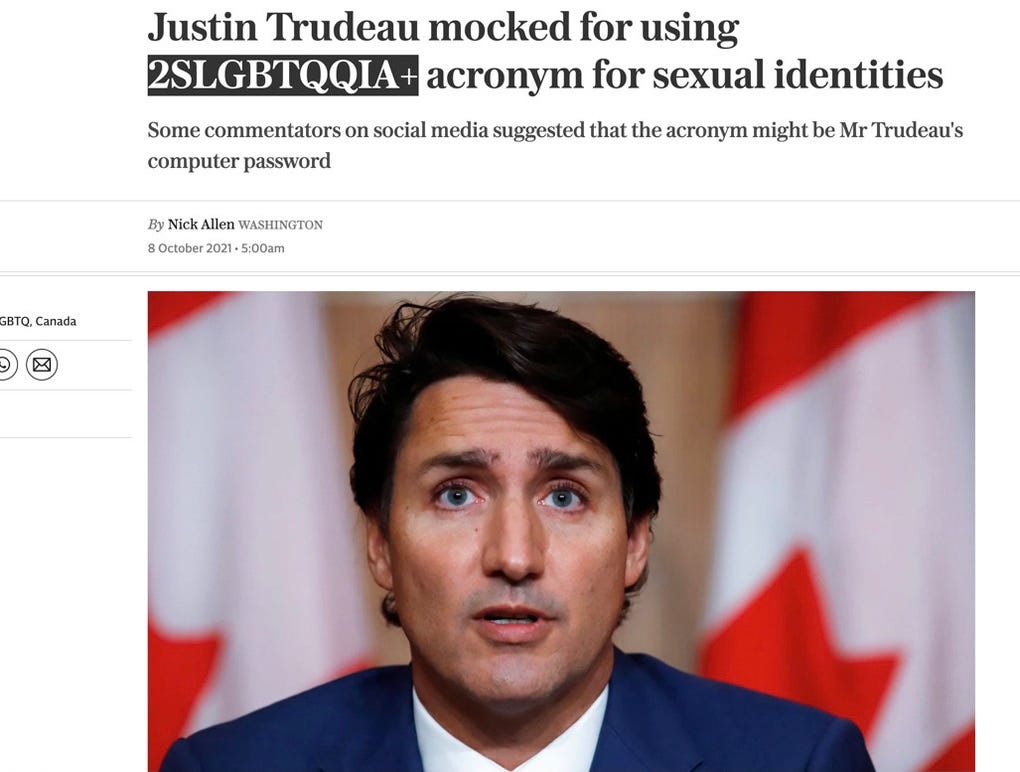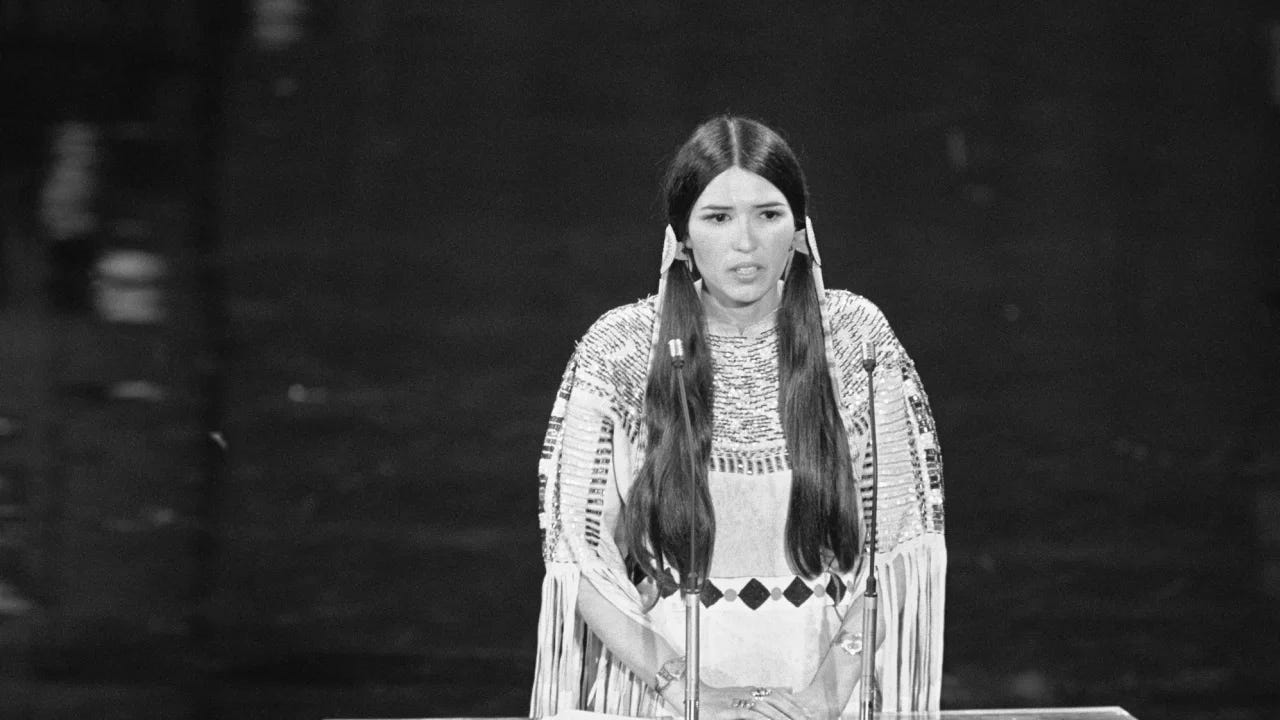Two Spirit: A Double Dose of Baloney
The concept of 'two spirit' emerged out of white gay mumbo jumbo and was championed by one of the most notorious pioneers of the gay rights movement.
For some time now the LGBTQ+ movement has been behaving more like a religious cult than a human rights lobby. It’s not just the Salem-like paranoia that grips activists at the slightest whiff of criticism. Above all it’s the drift into magical thinking that marks out the movement’s flight from Reason.
Take the latest addition to the LGBTQ+ lobby’s ever-multiplying nomenclature: the term ‘two-spirit’. It’s two spirit that explains the ‘2S’ in the latest incarnation of the lobby’s initialism: 2SLGBTQQIA+. I won’t bore you with what the other additional letters at the end mean. Life is too short and other letters will be along any moment.
‘Two spirit’ was adopted at a conference of Native American gay activists in 1990 in Winnipeg as a catch-all term to cover over 150 different words used by the various Indian tribes to describe what we might think of today as gay, trans or various forms of gender-bending such as cross-dressing. Two spirit people, the conference declared, combine the masculine and the feminine spirits in one. What’s more, we’re told, they were revered by many Native peoples as having special religious significance.
From the start the exercise reeked of mystical hooey. A sacred bird, a red tailed hawk, was later said to have hovered over the conference venue. As for the woman who proposed the term, Myra Laramee, she said it had been suggested to her by seven ancestor spirits who appeared in a vision. The spirits, she said, had both male and female faces which suggests Myra hadn’t received the memo that insists males and females can only be distiguished by checking their chromosomes.
Here’s Myra telling the story of the vision.
You may be wondering why there are only two genders that get to combine in…er ‘two spirits’ when LGBTQ+ lore now insists there can be innumerable gender identities. Even the BBC has said there are at least 100. Some blue-haired activists claim they have no gender. Maybe they’re the No Spirits? Like all nonsense this stuff doesn’t have to make sense.
Despite the distinct hint of the binary we’re all supposed to loathe various celebrities and politicians now proudly identify as two spirit rather than two-faced and the term has found its way into both Presidential proclamations and the doe-eyed bleating of Justin Trudeau.
This success is no doubt, in part, due to maudlin white American racial guilt that associates anything Native American with the sort of lost wisdom that’s so deep and meaningful no whitey can hope to comprehend it. Ever since Marlon Brando sent the “Apache” activist Ms Sacheen Littlefeather to collect his Oscar in 1973 nothing has signalled ethical superiority as much as someone wearing a feather headdress or hair tied with beadwork.
The sad fact is most Americans will believe just about anything they are told about Native Americans and this has become an open invitation to fakery. Ms Littlefeather, for example, who went on to build a career as an uplifting symbol of Native American womanhood turned out to be a member of one of the fastest growing tribes of all, the Pretendians. Her real name was Marie Louise Cruz and her supposed Indian heritage had just been made up.
My favourite Pretendian, by the way, was the “indigenous health expert” Carrie Bourrassa who did a Ted Talk dressed in an embroidered shawl, while holding a feather and introducing herself as “Morning Star Bear”.
“I’m Bear Clan. I’m Anishinaabe Métis from Treaty Four Territory.” she announced as an audience of mainly white people looked on starry-eyed.
Unfortunately she turned out to be Ms Big Fat Fake from the tribe of Makey-up who was eventually fired when her sister revealed she hadn’t a drop of indigenous blood and rather a lot of Slovakian. In an interview she muttered, “I’ve forgotten certain things”.
Much the same might be said of the ‘two spirit’ project. For one thing it’s been presented as an acknowledgment of the respect Indian tribes allegedly showed individuals who were gender non-conforming. Yet many of the words that ‘two spirit’ effectively replaces are derogatory. That shouldn’t be a surprise. Having a word to describe people who in the words of gay Derek in the Katharine Tate sketch “hide the sausage” doesn’t prove there was any respect. Otherwise ‘poof’ and ‘battyboy’ could be cited as terms of traditional endearment.
The fact is there was a startling range of attitudes to the so-called two spirit among the over 500 separate indigenous Native American tribes. In many tribes a strong theme of degradation or contempt emerges. In The Construction of Homosexuality (1998) David Greenberg points out that people who are now being called ‘two spirit’ were ridiculed by the Papago, held in contempt by the Choctaws, disliked by the Cocopa, treated by the Seven Nations with “the most sovereign contempt”, the Sioux "derided" them. The Apache ridiculed them behind their backs.
In some tribes the people who are now being called ‘two spirit’ were expelled as outcasts or in the case of the Yuna, who lived in what is now Colorado, might be set aside to be used as a rape object by the young men of the tribe.
Two spirit has now been extended to other native peoples including the close genetic relatives of Native Americans the Chukchi of Eastern Siberia. This is praised as yet more evidence of indigenous peoples’ deep tolerance and wisdom despite the fact the status of being a ‘two spirit’ among the Chukchi was not chosen by boys but enforced on them by violence. There are stories of boys who committed suicide rather become what is now being lauded as ‘two spirit’.
That doesn’t mean there was no reverence at all. There are examples of gender non conforming behaviour being respected. In his book The Assassination of Hole in the Day Anton Truer, a Professor of Ojibwe linguistics, notes that, “Sex usually determined one’s gender, and therefore one’s work, but the Ojibwe accepted variation. Men who chose to function as women were called ikwekanaazo, meaning ‘one who endeavors to be like a woman. Women who functioned as men were called ininiikaazo, meaning, one who endeavors to be like a man.” Both were treated as ‘special’.
It’s important though not to overstate this. A woman in medieval England who learned to write, a preserve of men at the time might be considered to be functioning as a man, or the equivalent of ininiikaazo but most of us would resist imposing an LGBTQ+ identity on her. That’s because it would be as crass and unsupportable as, say, labelling Joan of Arc transgender which, of course, the fruitier fruitloopies of trans activism have done.




